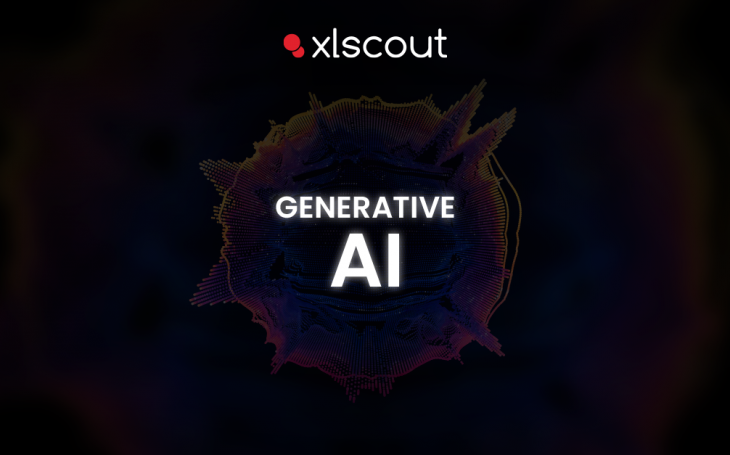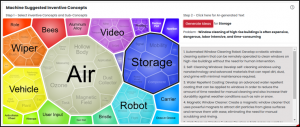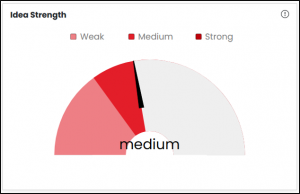
Large language and image AI models, also known as generative AI or foundation models, have opened up a new world of possibilities for businesses and professionals involved in content creation. Among these opportunities are:
1. Automated Content Generation: Large language and image AI models are capable of generating content such as blog posts, articles, and social media posts automatically. For businesses and professionals who create content on a frequent basis, this can be a precious time-saving tool.
2. Increased Content Variety: AI models can generate various types of content, such as text, images, and video. This can assist businesses and professionals in creating more diverse and interesting content that appeals to a broader audience.
3. Improved Content Quality: AI-generated content can be of higher quality than human-generated content because AI models can learn from large amounts of data and identify patterns that humans may not see. As a result, the content will be more accurate and informative.
4. Personalized Content: AI models can generate personalized content based on individual user preferences. This can assist businesses and professionals in developing content that is more inclined to appeal to their target audience and, as a result, more likely to be read or shared.
What Is Generative AI?
Generative AI can already accomplish a great deal. It can generate text and images, including blog posts, programme code, artwork (and even winning competitions, controversially), and poetry. Complex machine learning models are used by the software to predict the next word on the basis of previous word sequences or the subsequent image based on words describing previous images. LLMs first appeared at Google Brain in 2017, where they were used to translate words while preserving context. Large language and text-to-image models have proliferated since then at leading tech firms such as Facebook (OPT-175B, BlenderBot), Google (BERT and LaMDA), and OpenAI, a nonprofit in which Microsoft is the largest investor (GPT-3 for text, DALL-E2 for images, and Whisper for speech).
Because training these models requires huge amounts of data and computing power, they have largely been restricted to major tech companies.
However, once a generative model has been trained, it can be “fine-tuned” for a specific content domain using much less data. As a result, specialized models of BERT — for legal content (Legal-BERT), biomedical content (BioBERT), and French text (CamemBERT)—and GPT-3 have been developed for a wide range of specific purposes.
To use generative AI effectively, humans must be involved at both the beginning and end of the process.
The range of generative AI models is enormous. Images, emails, longer text formats, social media content, programme code, voice recordings, and structured data can all be accepted. They can generate new content, translations, questions answered, summaries, sentiment analysis, and even videos. These universal content machines have numerous potential business applications, which we will discuss in detail below.
Invention Process
One emerging application of Generative AI is Idea Generation. It can offer a number of benefits for inventors in terms of creativity, efficiency, and productivity. Some of these benefits include:
1. Generating New Ideas
Generative AI can be used to generate new ideas and concepts that an inventor might not have thought of on their own. This can help to increase the diversity of ideas and potentially lead to the discovery of new and innovative solutions.
2. Complementing Human Creativity
Generative AI can be used to complement human creativity by providing new ideas and solutions that might not have been thought of otherwise. This can help to enhance an inventor’s creativity and productivity.
Ideacue by XLSCOUT
XLSCOUT has employed Generative AI in its patent search tool. Using this, XLSCOUT is assisting individuals and organizations come up with new and innovative solutions to problems. Ideacue by XLSCOUT is designed to assist inventors with idea generation. We have created an Idea Playground powered by Generative AI for inventors. It suggests machine-generated inventive concepts to inventors, which they can combine with their own ideas to improve. These ideas can be generated based on the user’s preferred technology. As an interactive dashboard, Idea Playground allows users to select inventive concepts and sub-concepts and generate AI-based ideas based on them.

Inventive concepts act like idea triggers that can be used to simulate ideation and generate new ideas. Subsequently, these can be very useful for inventors. They assist them in thinking outside the box and developing creative solutions that they would not have considered otherwise. Along with ideation, idea evaluation is also an important part of the innovation cycle. XLSCOUT also includes an Idea Dashboard. The easy-to-use dashboard helps you with idea evaluation, brainstorming, and improving idea quality. It provides numerous other insights while significantly increasing the efficiency of research and development. The dashboard assists inventors in quickly assessing the strengths and weaknesses of their ideas in a few simple steps. It gives a qualitative indication of the strength of an idea. Subsequently, using the indicator, inventors can determine whether or not their idea is ready to move forward. Or whether it requires more brainstorming or iterations.

Marketing Process
These generative models have the potential to be used in marketing applications. Jasper, a marketing-oriented version of GPT-3, for example, can generate blogs, web copy, social media posts, sales emails, ads, and other types of customer-facing content. It maintains that its outputs are frequently tested using A/B testing and that its content is optimized for search engine placement. Jasper also fine-tunes GPT-3 models with the best outputs from their customers, which, according to Jasper executives, has resulted in significant improvements.
The majority of Jasper’s customers are individual people and small businesses, but some groups within larger corporations also use its services. Writers at VMWare, for example, use Jasper to generate novel content for marketing, from email to product campaigns to social networking copy. According to Rosa Lear, director of product-led growth, Jasper assisted the company in ramping up its content strategy, and the writers now have more time to do research, ideation, and strategy.
Code Generation
GPT-3, in particular, has proven to be an efficient, if not flawless, generator of computer program code.
GPT-3’s Codex program, which is specifically trained for code generation, can generate code in a variety of languages. Provided, a description of a “snippet” or small program function. CoPilot is a version of GPT-3 for code generation available on Microsoft’s Github.
Some of the time, the latest versions of Codex can now recognize bugs and fix errors in their own code. Moreover, it can even describe what the code does. Microsoft’s stated goal is to create tools like Codex and CoPilot rather than to replace human programmers. To improve their speed and effectiveness, they “pair programmers” with living beings.
These examples of generative AI applications should show that we are only scratching the surface. Generative AI has a lot more potential. Such systems may soon be standard practice, for example, in crafting most or all of our written or image-based content — providing first drafts of letters, emails, articles, computer programs, blog posts, presentations, reports, videos, and so on. Without a doubt, the development of such capabilities would have dramatic and unexpected implications for content ownership and intellectual property protection, but they would also revolutionize knowledge and creative work.

